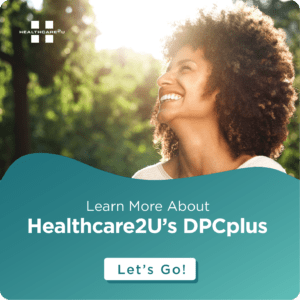Blog Posts
Two Accelerating Contributors to Health Inequity [How Medication Insecurity and Healthcare Homelessness Calls for Better Access to Primary Medical Care]
Unfortunately, pay inequities and lack of access to care are not the only factors preventing socioeconomically disadvantaged groups from realizing health equity. Other barriers include the fact that many often delay or avoid care because they can’t afford to pay the deductible required for high deductible health plans. Many also lack the resources to pay for prescriptions. Here we’ll examine how these two contributors to health inequity are rapidly expanding and how to address them.
Medication Insecurity
While many have died after not being able to afford needed treatment, there are millions more experiencing medication insecurity. Medication insecurity is the inability to pay for prescribed medication at least once in the past 12 months.
A recent survey by Good Rx found that of the 75 percent of respondents who take at least one prescription medication, 28 percent have a prescription not covered by their insurance. Just over half of this group spent less than $50 on these non-covered medications monthly, while the remaining spent up to $300 or more monthly. And during 2020, amid a raging pandemic, about 13 percent of people had at least one prescription medication dropped from their insurance coverage.
Even before the Covid-19 pandemic, a rising percentage of adults reported not having had enough money in the previous year to pay for needed medicine or drugs prescribed by a doctor. As of September 2019, 23 percent fell into this category. That’s about 58 million adults who experienced medication insecurity.
High Deductible Health Plans
High-deductible health plans (HDHPs) have become a standard option among Americans. HDHPs are so common that in 49 states, at least 25 percent of residents who received employer-sponsored insurance were enrolled in one as of 2016.
With at least 40 percent of Americans lacking even $400 in savings for an emergency, it’s not surprising that many with insurance still can’t afford to use it. These policies often offer low monthly premiums but fail to cover the cost of primary healthcare. The low price may work when calculating monthly expenses, but when an employee needs to use their insurance, the high deductible can make it impossible for some to get needed care.
Healthcare avoidance due to expense has become a significant barrier to U.S. families. BenefitsPRO recently highlighted a sobering statistic: 40 percent of privately insured adults with deductibles that comprise 5 percent, or more of their income put off or entirely avoided essential health care due to their deductible.
One survey found that 40 percent of privately insured adults with deductibles that comprise 5 percent or more of their income put off or entirely avoided essential health care due to their deductible.
The Need for Change
More than 13 percent of American adults, about 34 million people, say at least one friend or family member in the past five years died after not receiving needed medical treatment because they were unable to pay for it. The number of Americans who have died after 1) not being able to pay for care, and 2) the rising population with medication insecurity, highlight the urgency of the U.S. healthcare cost crisis.
These are a few reasons more affordable options like direct primary care (DPC) have been catapulted to the forefront of the healthcare revolution. DPC is a healthcare membership that provides unlimited access to primary care for a low monthly fee. It can be offered as a companion, or gap solution, to HDHPs to give day-to-day coverage to families.
Many direct primary care plans include generic first protocols or prescription discounts, as well as discounts on labs and imaging services (including MRIs, CT scans and X-rays), a game-changer for some. Not only do DPC members receive unlimited in-office visits, physicals, and virtual options for care, but they also save on drugs that are often out of their price range.
If you’d like more information on how to end medication insecurity and healthcare “homelessness” with direct primary care, contact Healthcare2U. As the nation’s fastest-growing hybrid DPC provider, we offer unlimited membership benefits that span state lines.
Blog Posts
News
Uncategorized
Blog Posts
News
Blog Posts
Blog Posts
News
Blog Posts
Blog Posts
Blog Posts
Blog Posts
Blog Posts
Blog Posts
Blog Posts
Blog Posts
Blog Posts
Blog Posts
Blog Posts
Blog Posts
Blog Posts
Blog Posts
Blog Posts
Blog Posts
Blog Posts
Blog Posts
Blog Posts
Blog Posts
Blog Posts
Blog Posts
Blog Posts
Blog Posts
Blog Posts
Blog Posts
Blog Posts
Blog Posts
Blog Posts
Blog Posts
Blog Posts
Blog Posts
Blog Posts
Blog Posts
Blog Posts
Blog Posts
Blog Posts
Blog Posts
Blog Posts
Blog Posts
Blog Posts
Blog Posts
Blog Posts
Blog Posts
Blog Posts
Blog Posts
Blog Posts
Blog Posts
Blog Posts
Blog Posts
Blog Posts
Blog Posts
Blog Posts
Blog Posts
Blog Posts
Blog Posts
Blog Posts
Blog Posts
Blog Posts
Blog Posts
Blog Posts
Blog Posts
Blog Posts
Blog Posts
Blog Posts
Blog Posts
Blog Posts
Blog Posts
Blog Posts
Blog Posts
Blog Posts
Blog Posts
Blog Posts
Blog Posts
Blog Posts
Blog Posts
Blog Posts
Blog Posts
Blog Posts
Blog Posts
Blog Posts
Blog Posts
Blog Posts
Blog Posts
Blog Posts
Blog Posts
Blog Posts
Blog Posts
Blog Posts
Blog Posts
Blog Posts
Blog Posts
Blog Posts
Blog Posts
Blog Posts
Blog Posts
Blog Posts
Blog Posts
Blog Posts
Blog Posts
Blog Posts
Blog Posts
Blog Posts
Blog Posts
Blog Posts
Blog Posts
Blog Posts
Blog Posts
Blog Posts
Blog Posts
Blog Posts
Blog Posts
Blog Posts
Blog Posts
Blog Posts
Blog Posts
Blog Posts
CONTACT US
BECOME A PART OF THE SOLUTION
Redefine the healthcare experience with No-Claims Healthcare™
